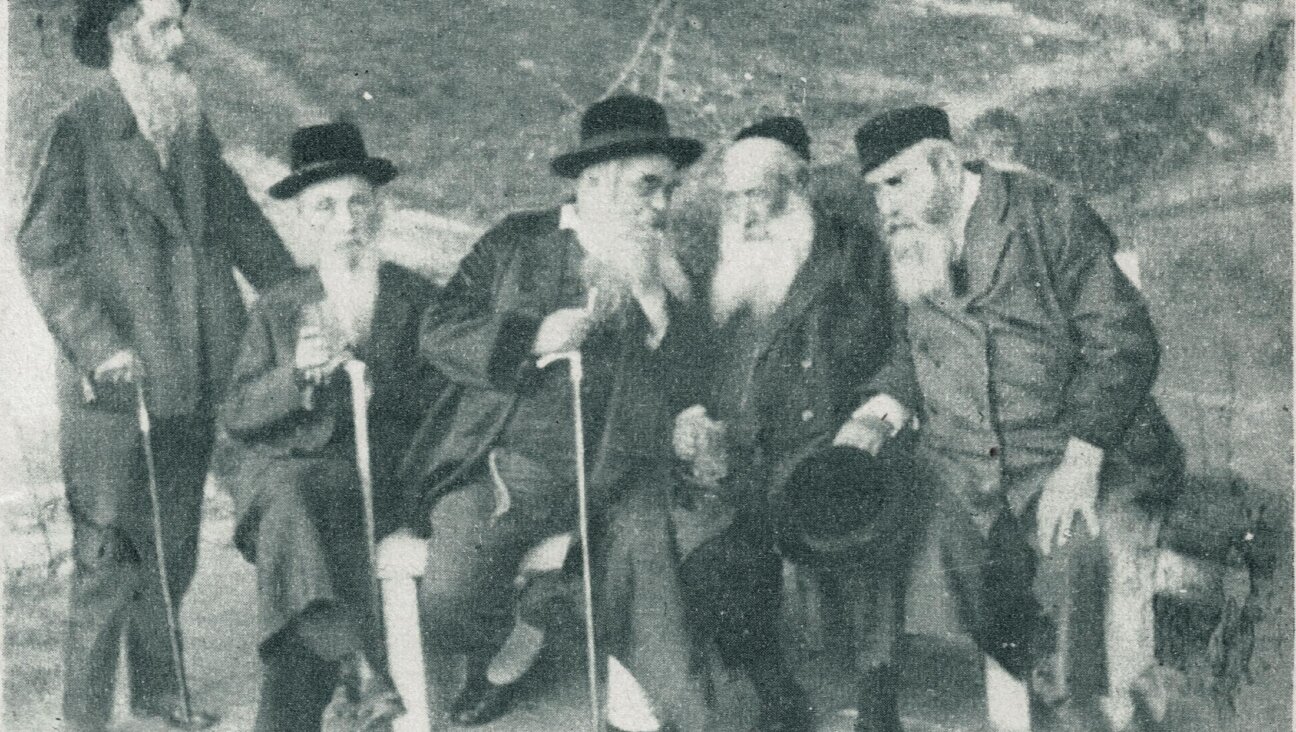Grigory Kanovich’s Remarkable Love Song For a Lithuanian Shtetl

This article originally appeared in the Yiddish Forverts.
Thanks to the hard work of his literary admirers, an English translation of Grigory Kanovich’s autobiographical novel “Shtetl Love Song” has finally appeared.
The novel was released by a boutique British publishing house, Noir Press, that specializes in modern Lithuanian literature. It’s remarkable that one of the most important Jewish authors of our time never found an English-language Jewish publisher. As a result, his novel now appears as part of a series called “Contemporary Lithuanian Classics.” Jewish publishers and editors once helped to spread the literary treasures of other peoples; now Jewish authors need to rely on the support of non-Jews for publication.

Kanovich, a Lithuanian Jew whose mother tongue is Yiddish but who writes almost exclusively in Russian, was acclaimed in the former Soviet Union as the most important author of works on Jewish themes in the Russian language. As such, he earned himself a niche within Soviet literature. Although Kanovich has now lived in Israel for more than a quarter century, his strong bond with Eastern Europe and the Russian language has never weakened.
“Shtetl Love Song” belongs to the genre of homespun shtetl literature, which began with Mendele Mocher Sforim’s autobiography, “Shloyme Ben Khayems.” One generation fades and another takes its place; the old country is fading year by year from the Jewish collective consciousness. In its place, the memory of the real shtetl is being replaced by a mythological image. Today’s readers are more interested in fantasies about the shtetl than realistic depictions of its Jewish life. Real shtetlekh, towns with significant Jewish populations spread throughout pre-Holocaust Ukraine, Lithuania, Poland, Bessarabia and more, are barely represented in contemporary Jewish culture.
Kanovich’s novel, translated by Yisrael Eliot Cohen, is a work of over 500 pages. The action proceeds slowly, reflecting the seeming eternity of life from the perspective of a child. The central figure of “Shtetl Love Song” is the protagonist’s mother, around whom the other characters, mostly immediate family members and distant relatives, seem to revolve.
Slowly encroaching with every passing year of the novel’s plot is the stark political reality that intrudes upon the author’s magical childhood. The book concludes with the entry of German troops into Kanovich’s Soviet Lithuanian shtetl. As Kanovich’s parents decided to in life, the family of the novel flees deep into the USSR, escaping execution at the hands of the Nazis. During the novel’s final passages, Kanovich details his protagonist’s return to Lithuania, which had by the war’s end been transformed into a massive Jewish graveyard. And here, at the very end of the book, Kanovich reveals the moral of his literary achievement: “Those who would allow the corpses to be forgotten will themselves be sentenced to oblivion.”
In the novel, Kanovich’s character’s exile in the USSR ends with his arrival by train in Vilnius just after the end of the war. This was the city where “my Jewish brothers and I found sanctuary and searched hopelessly for traces of the rich Jewish life that was.” Kanovich never saw Jewish Vilna before the Holocaust. During his childhood, Vilna, then Wilno, belonged to Poland, something which was never recognized by the Lithuanian republic. As Lithuania claimed the city as its capital, it found itself in conflict with Poland. Relations between the two countries were so tense that the Polish-Lithuanian border was closed for nearly the entire interwar period. Lithuania was granted control over Vilnius and the surrounding area by Stalin in 1939, shortly after the USSR and Nazi Germany subdivided Poland as part of the Molotov-Ribbentrop Pact.
“Shtetl Love Song” may seem sentimental to contemporary Jewish readers, but it has an important role to play in today’s political reality. The post-Soviet republics are continually rewriting their histories with a nationalistic narrative that leaves little room for their Jewish past. While they are aware that it is unacceptable to deny the Holocaust because doing so would threaten relations with Western Europe and the United States, it has become acceptable for them to manipulate the historic reality of the Holocaust for their own purposes, such as emphasizing their country’s suffering under the Soviet regime. This approach allows the various stripes of Eastern-European nationalists to present their country as a victim of occupation and even genocide. In this way the collaboration of local citizens and “freedom fighters” with the Nazis in murdering Jews can be easily hushed up. Grigory Kanovich’s novel is so important because there simply aren’t many Jewish voices left which can provide a personal counter-narrative.
A message from our Publisher & CEO Rachel Fishman Feddersen

I hope you appreciated this article. Before you go, I’d like to ask you to please support the Forward’s award-winning, nonprofit journalism during this critical time.
At a time when other newsrooms are closing or cutting back, the Forward has removed its paywall and invested additional resources to report on the ground from Israel and around the U.S. on the impact of the war, rising antisemitism and polarized discourse.
Readers like you make it all possible. Support our work by becoming a Forward Member and connect with our journalism and your community.
— Rachel Fishman Feddersen, Publisher and CEO






























